|
10/21/2015 4 Comments Malaria Fighter with a Golden Heart
By Dr. Lidiya Angelova-Duleva
I heard about Dr. Martha Sedegah for the first time when I was a postdoc in a malaria research lab at the National Institutes of Health, Rockville, MD. I was inspired by her success in such a competitive area as malaria research. Dr. Sedegah is a Principal Investigator, Director of Clinical Immunology, and Director of Parasitology at the U.S. Naval Medical Research Center (NMRC) in Silver Spring, MD. Dr. Sedegah is also faculty as a mentor for the Postdoctoral Program at the Noguchi Memorial Institute for Medical Research (NMIMR), and an Adjunct Professor at the Department of Microbiology and Immunology, University of Maryland at Baltimore, School of Medicine, Baltimore MD, where she was a Research Assistant Professor. She also collaborates with Sanaria Inc., a biotech company whose only mission is to develop an effective malaria vaccine that will prevent death from this terrible disease. Dr. Sedegah’s research interest at the NMRC is focused on detecting advanced epitope-based malaria vaccines. Her work gives hope to millions of people infected with malaria every year; however, a vaccine is still not available because of the complicated parasite life cycle and its ability to gain resistance to new drugs very quickly.
Dr. Sedegah’s efforts toward a vaccine against malaria are one part of the bigger problem she is helping to solve. In many of the areas affected by malaria people are poor, without access to education, and do not know how to protect themselves from the parasite or how to take medications and vaccines. Fighting malaria could be successful only if the poverty ends, so in 2001 Dr. Sedegah founded the Akumaning-Brewu Foundation, which helps to build schools in rural parts of Ghana, where she was born. Thanks to her, many people can experience the world of knowledge for the first time and educate others. Her work in advancing science in the area of malaria vaccines and in building schools in rural Ghana is making a huge impact on the lives of the current and new generations in Ghana and in malaria-affected areas.
Dr. Sedegah was kind enough to take some time to answer several questions about her life and work. What's your education and when did you go to the US? After I finished my MSc degree and my PhD course work at the University of London, I came to the US Naval Medical Research Institute (NMRI) in Bethesda, MD in 1983 to do the research work for my PhD thesis, under the World Health Organization (WHO) research-training program. I then had 2 sons. I have always combined having family with getting my graduate degrees and my daughter Mary was born in 1987, while I was still writing my thesis. I got my PhD degree a year later in 1988. Why did you choose to work with malaria? Malaria is responsible for more deaths in children in the world than any other infectious disease. Malaria will kill up to a million children this year, and more than 80% of them from sub-Saharan Africa. In other words, I could have been part of this statistics. When I got the chance to do malaria research towards vaccine development, that became the ONLY thing I wanted to do. While I attended Chelsea College, University of London for my courses, my research work for my MSc thesis was done at the Department of Pathology, Royal College of Surgeons of England (RCSE), London. This lab was very heavy on basic immunology, and malaria research was one of the study areas. Do you have someone that inspired you? I have been blessed to have some good people in my research life. First was Nina who was my mentor at the RCSE, London. Nina taught me not only science, but love and care for people I work with. She basically treated me with love and respect, as if I were her daughter. She actually cooked all the meals for our wedding reception when I was a very broke grad student. Her show of affection allowed me to trust her and I just found myself loving science a lot, without even thinking about it. Second was Dr. Richard Beaudoin (blessed memory). Just before I finished my MSc degree, I wanted my PhD research work to be in malaria vaccine development. I read all that was published in the literature, looking for laboratories in the US who were doing this kind of research. Two laboratories caught my eye: the Naval Medical Research Institute (NMRI), and New York University (NYU). They both published articles on the immunization against malaria using radiation attenuated sporozoites. After reading those articles, I wanted to be in this research field. I sent hand-written letters to both labs and Dr. Beaudoin responded first. For funding, I applied to WHO, and was awarded a research training grant that made it possible for me to do my research work at the NMRI, now called the Naval Medical Research Center. Dick, as he was popularly called, like Nina, was just like a father to me. When Dick passed, he literally passed me on to Dr. Steve Hoffman, then at NMRC and now the Chief Executive and Scientific Officer at Sanaria Inc. There are no words to describe Steve. He is one of the most special people one could ever meet on planet earth. Many who know him will describe him as "intense" – intense yes, but in a good way, which has the power to bring out what I never knew I had or could do. It is no surprise that of the over 95 peer-reviewed articles I have authored, 57 of them, 60%, were co-authored with Steve. With Steve, there is no "can’t do," which makes sense to me. After all, in research, one does not know everything, that is why we call it research and we continue to discover the truth through experiments day in and day out. Steve and I believe in the goal of making the dream of vaccinating against malaria a reality and I am thankful to have the opportunity to continue working with him on this unbelievable cause. As I look back, I know that everything I have been able to do was made possible because these special people I met on the way treated me with respect and love, and helped put me on a development path that had nothing but success written all over. I have used that to help bring out the best in the numerous student interns I have mentored at NMRC and in Ghana over the past several years. I was blessed to have a mom and dad who helped me believe that what a person can do or will become in life is never written on their birth certificate. While I have been blessed to have had these three people, Nina, Dick, and Steve in my research scientist journey, without the love, nurture, and support of my mom and dad (blessed memories), who gave me the chance to get what they never had and taught me to use the challenge of not having anything as an opportunity to get everything, there would not be a Nina, Dick, or Steve in my life. What advice would you give to your younger self, if that would be possible? If you find a cause you believe in, be all over it and never let go. Take every challenge as an opportunity to pull it off and you will be amazed at how you surprise yourself. Science involves teamwork so respect your teammates, work hard, be honest, kind and above everything, be real, be human, and as you move up, turn to pull someone up. It is the best feeling you’ll ever have. When did you get the idea of your foundation and what was its biggest challenge? Assin-Nsuta is a small village in the Assin district of the Central Region of Ghana. It is located at approximately 37 miles from Cape Coast, on the road from Cape Coast to Kumasi. Approximately 4-5,000 individuals live in this village, the large majority of whom perform subsistence farming to survive. The population is extremely poor and suffers from a very heavy burden of malaria and other infectious diseases. In spite of these problems, the children of this impoverished area are eager to go to school and change their fate. During my visits to Ghana over the past years, I often visited my birthplace in the village of Assin-Nsuta. During such visits, I would go to the primary school to talk to the children about the benefits of education and how it can dramatically improve their chances of success in life. During one of those visits, I noticed that the children were attending school in the village chief’s house, rather than a suitable classroom building. As the number of children increased over the years, it became very difficult to fit all of the children in his house. As a result, a local Methodist Church’s fellowship group began a communal labor effort to build a school for the children. It is a common practice usually initiated by the women in the church in villages in Ghana. In 2001, I went to see the school building they put up for the children. The completed school building was a wooden hut that left the children exposed to the wind and rain during school hours. That meant no school on rainy days. In addition, the school had very little to no supplies and textbooks, making it very difficult to educate this small disadvantaged group of children. It was clear that I had to do something.
Later that year, I started sending money from my paycheck to build a stable school building. I set up the 501C Akumaning-Brewu Foundation to honor my mom and dad in their belief in helping to educate the underprivileged. In 2009 after about 60% of the building was completed, my mom passed. Since all the money I put into this project was coming out of my monthly paycheck, it also meant that is was a very, very, very, slow project. When my mom passed without me being able to complete the building as she had wished, I was very sad and could not take it any longer and I promised myself to finish it up by the first year anniversary of her passing. I still did not know how to get the money. The only money I had in my name was my 401K, so that was exactly what I did. I took that 401K money and finished the building, which was inaugurated at the first year anniversary celebrations of my mom's passing. I couldn’t be happier!
Today, the six classrooms harbor over 450 children from class 1 through 6. Several of these children walk to this school from nearby villages to fill the classes. I recently added two kindergarten classrooms and there are two other rooms for computer labs. I have since been sending books, school supplies, a few laptops and projectors. Before the laptops, the children had to be taken to an Internet cafe at a nearby town to be taught computer class. My belief is that having a decent school plus reasonable tools for these children will give them the opportunity to be not only good world citizens, but also give these students a chance to fight their way out of a life pre-destined for poverty. Without this help, their chances are very diminished.
I don’t think that I can add anything else to Dr. Sedegah’s wise words. Finding a cure for disease will save lives, but building schools will save both lives and souls. To be a good scientist, you must be smart; but to make a difference you must have a golden heart.
Comments? Leave them below!
4 Comments
Dr. Kwadwo Asamoah Kusi
11/5/2015 12:23:51 pm
I am a beneficiary of the Dr. Sedegah's golden heart; in my about 10 years of working with her, starting as a masters degree student through my postdoctoral training, Dr. Sedegah has been a source of inspiration and a great teacher. She is a truly special person, for it takes such a one to look beyond herself and here personal needs to build a future for others. Thank you Lidiya for this expose
Reply
Prof. P. Intsiful, Ph.D.
11/18/2015 04:55:05 pm
I cannot begin to express my utmost admiration for Dr. Martha Sedegah’s accomplishments: her high academic achievement coupled with humbling demonstration of intellectual and cultural wisdom; reaching out to the helpless; understanding the true meaning of giving back to the community which has given so much - her simple beginning; qualities that laid the structural foundation that propelled her to the successful path we observe today. Her deed is a classic example of the fact that, it takes a community/village to raise a child. Dr. Sedegah’s school project is a good demonstration of her selflessness. May she continue to be the backbone of support for her village and the surrounding villages; provide mentorship as well as educational means for the children; serve as an example to all of us; especially, those in positions to reach out to our communities, to demonstrate our love and selflessness to humanity.
Reply
Venus
12/17/2015 01:02:36 am
Congratulations for all these achievements and wonderful works mum, if the world had more of your kind, l believe it will be a much better place than it is now.Your are indeed kindhearted, selfless and inspiring,that makes you a special woman.To God be the glory, you are a part of my life and I, yours.
Reply
Kristian Darko
2/2/2016 05:59:17 pm
“Finding a cure for disease will save lives, but building schools will save both lives and souls.”This sentence sums up the full essence of science! Congratulations, Dr Sedegah for your accomplishments and thank you, Dr. Angelova-Duleva for throwing light on this all important and true daughter of Africa.
Reply
Leave a Reply. |
SPOTLIGHTSMeet our Scientista Spotlights -- current-day women in STEM and women from science history -- and find your role model! Read opinion editorials and history pieces to get additional inspiration.
WHAT'S NEWYOU MIGHT ALSO LIKE
WHAT'S HOTCONNECT WITH USARCHIVES
June 2018
|
The Network for Pre-Professional Women in Science and Engineering
The Scientista Foundation is a registered 501(c)(3) -- Donate!

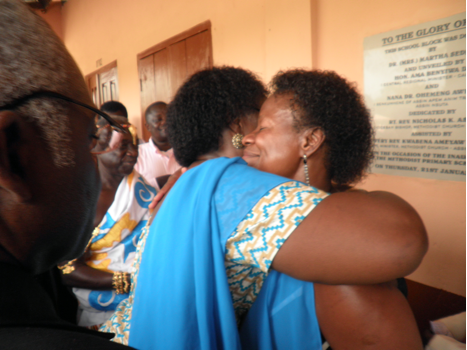
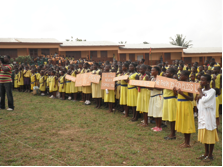
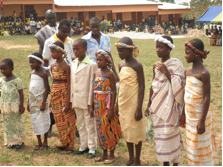
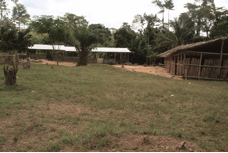
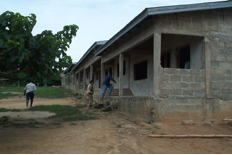
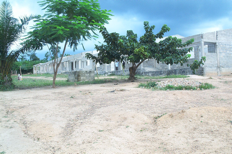
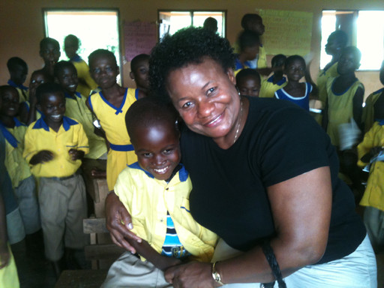
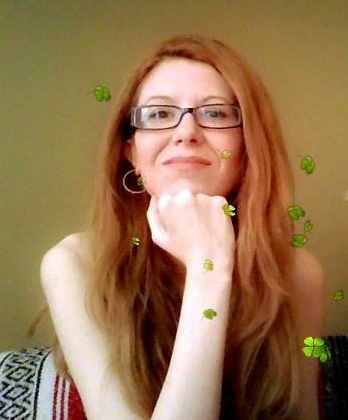








 RSS Feed
RSS Feed